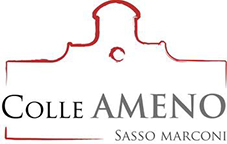“Ghisilieri Palace, in Pontecchio, called Colle Ameno (Pleasant Hill), built as a city with houses and workshops; there are sculptures by Angelo Piò and paintings by fine modern painters. A theatre painted by Antonio Bonetti”
M. Oretti – “Paintings in palaces and villas of Bologna area”, 1770 – 1787
Colle Ameno, an interesting example of the typical 18th-century architecture, designed
for living quarters and production buildings.
Built around the villa of the noble family of the Ghisilieri, the village still has its original
pre-industrial structure with houses and craft workshops, a hospital for the poor, a printer’s
and a famous ceramic factory. During the Second World War, it became a Nazi prison
and sorting centre.
THE VILLAGE
HOUSES, CRAFT WORKSHOPS AND STUDIOS, CULTURAL ASSOCIATIONS
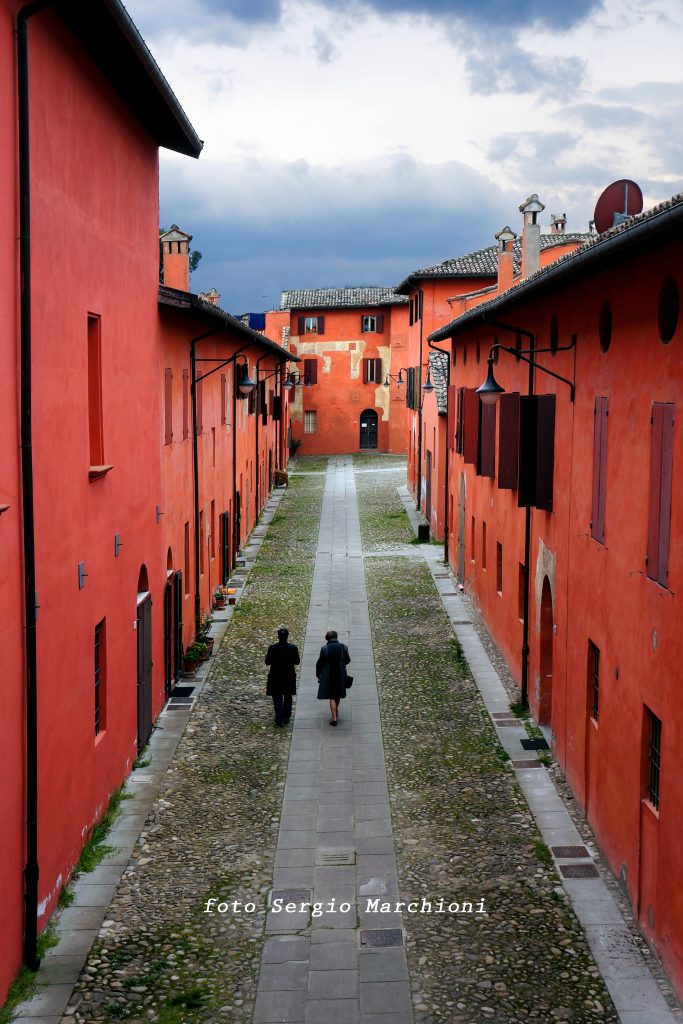
The present village is the result of developments started in the second half of the 17th century, to improve, complete and transform the village itself. To preserve the original purposes of this peculiar architectonic body, the buildings are now residence houses, artisans workshops and studios. The external fronts were decorated with trompe l’oeil pictures (some fragments are still visible) under the direction of the 18th century artist
Mauro Aldrovandini.
WWII
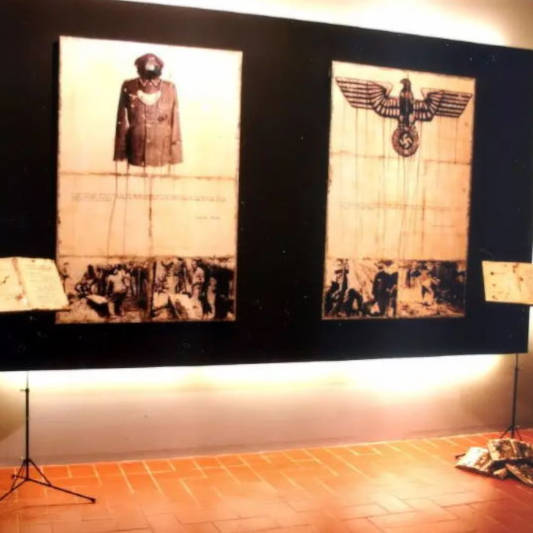
During the 2nd World War, Colle Ameno was used by the German army as a support for its air force, as a military hospital and as a male concentration and deportation camp after mopping up operations in the Gothic Line area. 21 civilians were murdered by nazis. Bombings didn’t cause serious damages to Colle Ameno. It seems that grenades slightly hit the buildings, however wildly destructing the works of arts and furnishings. In particular precious wax statues decorating the Ghisilieri villa, were used as targets and destroyed, while the wooden statues decorating the oratories dedicated to St. Antonius from Padua and St. Pio were shut and damaged.
PRIVATE THEATRE IN THE EAST WING OF GHISILIERI VILLA

In the east wing of the Ghisilieri villa was a private theatre. This was on the main floor and was decorated using the design of the 18th century scholar Marcello Oretti by the architectural painter Antonio Bonetti (1710-87). Unfortunately, the theatre is now almost in ruins. All residences of the 18th century Bolognese noble families had a theatre for the performance of shows, dramas and operas. The theatre was accessed directly from the villa’s main floor, through a foyer with a grand staircase sustained by a frescoed rampant vault. The column, with their capitals and the pilasters of the staircases, were painted to simulate costly materials and the walls had niches for statues. Here was the entrance to the magnificent “Emperors Room” (with a long and
narrow rectangular floor plan), the walls of which were decorated with trompe l’oeil pictures, the Ghisilieri family Coat of Arms, antique vases, floral patterns and the portraits of roman emperors wearing laurel wreaths. Most notable was the vaulted ceiling made in trelliswork and plaster, which was suspended from the wooden roof beams.
DAVIA VILLA AND GHISILIERI VILLA – SOUTH WING
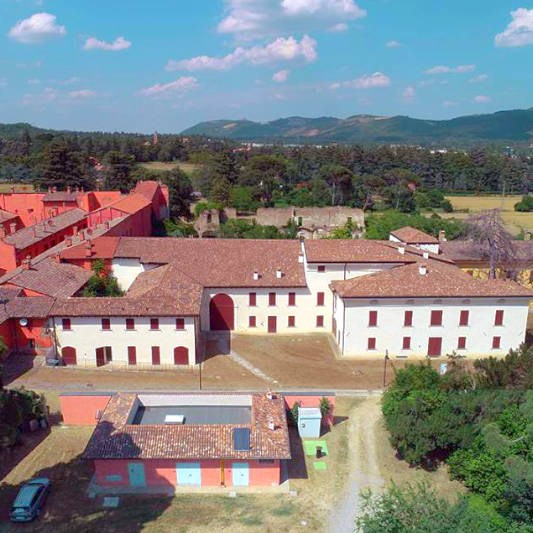
The original nucleus of the south wing is formed by the Davia family’s 17th century small palace. During the 1730s thanks to marquees and Bolognese senator Filippo Carlo Ghisilieri, the elegant residence house was extended, renewed and decorated under the direction of architect Francesco Galli, painter Mauro Aldrovandini and sculptor Angelo Gabriello Piò. Ghisilieri extended the front, adding a storey to the building and built the grand staircase to give access to the main floor. The loggia at the first floor of Davia villa still
keeps fragments of the original trompe-l’oeil pictures of the 18th century on the walls and on the trelliswork vault.
ORATORY DEDICATED TO ST. ANTONIUS FROM PADUA AND ST. PIO V GHISILIERI
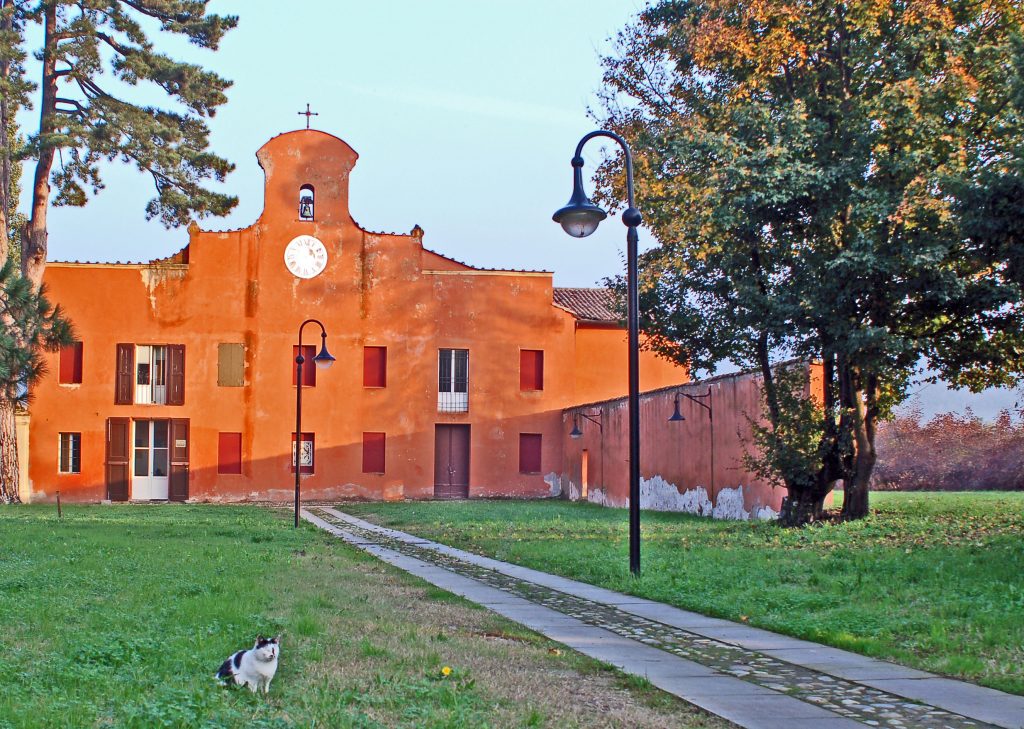
The building started around 1675 thanks to Giovanni Antonio Davia. Between 1733 and 1735 the marquees and Bolognese senator Filippo Carlo Ghisilieri restored, renewed and extended the oratory dedicated to St. Antonius from Padua. In 1738 or 1739 an hospital admitting men and women was built nearby. In 1747 the oratory was also dedicated to Pope Pio V Ghisilieri. Inside still keeps trompe-l’oeil pictures, stucco works and polychromatic altars produced during the 18th century under the direction of Mauro Aldrovandini and
Angelo Gabriello Piò.
